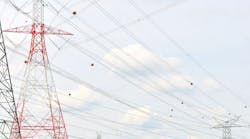Recently I listened to a panel of experts toss around the supposed future of the electric distribution system. There was quite a discussion about all the challenges facing utilities. Renewables, micro-grids, independent distribution operators – you name it. Very interesting stuff. However, there was an overall sense of urgency. One of the speakers kept pushing that utilities have to act now – or be left behind. The other panel members wisely nodded their heads.
But what does being “left behind” mean?
And then there’s the New York Times article:
“Electric utility executives all over the world are watching nervously as technologies they once dismissed as irrelevant begin to threaten their long-established business plans. Fights are erupting across the United States over the future rules for renewable power.”
Really? Fights? I have never seen middle-aged utility execs duking it out in the hall!
The article goes on: “Some experts say the electricity business is entering a period of turmoil beyond anything in its 130-year history, a disruption potentially as great as those that have remade the airlines, the music industry and the telephone business.”
Oh, I don’t know. I went through the deregulation spasms of the 1990s. Talk about business disruption! California utilities created unregulated enterprises that jumped in and out of business opportunities faster than a fiddler’s elbow. Energy traders, particularly Enron, took advantage of the chaos and took power plants offline for maintenance in days of peak demand to increase the price. Market manipulation led to an 800% increase in wholesale prices for a couple of months in 2000. And rolling blackouts were a common occurrence.
Now, that was disruption. Still, I don’t remember any executive fist fights or mass lay-offs in our industry. Instead, about half the states deregulated in more-or-less stable form and most utilities returned to their core competencies. The resulting utility health is reflected in attractive dividends. Sure, for the consumer these are definitely mixed results – in many cases deregulation has drastically raised electric rates.
But a much larger portion of the revenue is now going into fixing up neglected poles, wires and other infrastructure, whereas a couple of decades ago the biggest chunk of revenue went to generation and power purchases.
For T&D folks I’d call that turning the deregulation lemon into lemonade. Wouldn’t you?
Yes, we’re being confronted by a number of what EEI calls ‘disruptive challenges’. And, of course, media pundits and bloggers point out that solar, wind and other distributed energy resources will force terror and bewilderment onto electric utilities.
I don’t think so. Here’s my shot at a few of the ‘worst’ things that could happen and why I don’t think they’re so awful.
1. Increasing deluge of new residential solar installations and consequent operational issues with the distribution system.
What a great opportunity to re-design and re-furbish our ancient, primarily radial, distribution system! The control and communications technology is abundantly available and some has already been put in place to support Advanced Metering Infrastructure.
2. Distribution could go the way of transmission and the industry could move to open distribution access and independent distribution operators. Utilities would no longer have ownership nor control.
If and when that happens the affected utility would have to be paid back, through rates, for the asset value of the distribution system which, by that time, would be much higher than it is today due to increased modernization programs. That’s what happened when deregulated utilities were divested of transmission assets. How the rates would be adjusted and distributed is anybody’s guess at this point but companies would need to be made financially whole.
3. Utilities will disappear, to be replaced by independently owned distributed resources and interconnected microgrids.
And Flash Gordon will run the country! But, say that eventually happens. With that complex paradigm power engineers, technicians and field workers will be needed like never before. And they’ll be paid well as competitive private enterprises spring up. How cool is that?
4. All this chaos will drive rates way up and service quality way down!
Only to the extent that consumers will stand for it. I’m betting that whatever happens, though we may bobble a few things, the feedback loop of consumers, regulators and industry technology suppliers will ultimately provide a better system. This will never be our grandfather’s system again, nor do we want it to be, do we?
So, as we’ve done before, I’m sure we’ll adapt to whatever comes along. We already have some utilities forming partnerships with solar providers to structure new business opportunities. Other utilities are watching these ‘first adopters’ to see what happens.
And, of course, we have years of examples of what works and what doesn’t. Solar is not as economically attractive to Germany, the poster child for PV, as it once was and feed-in tariffs aren’t the answer. The cheap panel business in China won’t last forever nor will cream-skimming by US installers.
So, rather than getting panicky and heading off in some wild and wonderful direction, the US utility industry might want to just stay tuned but stay alert a little longer and let the first movers do a little more pathfinding.
What are some other lemons and lemonades that you see coming down the pike? I’m sure you can think of some. Let’s get a discussion going here.
Now, if we can just get those overwrought executives to stop fighting...


